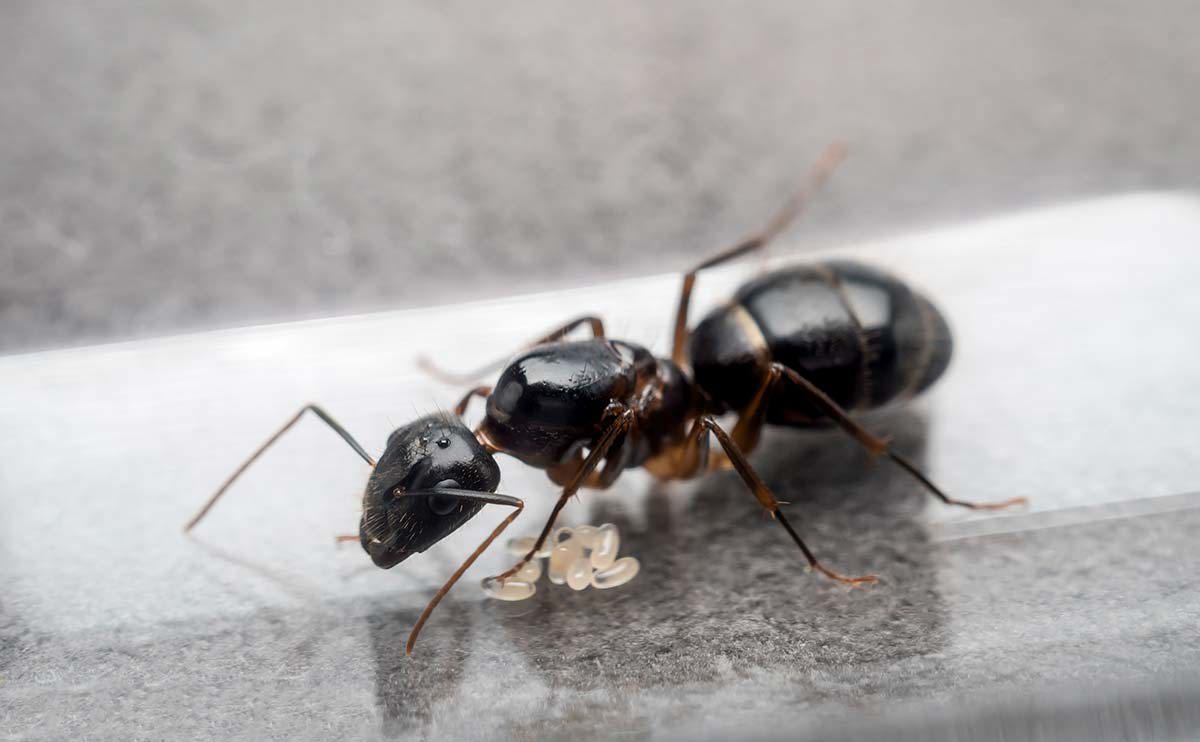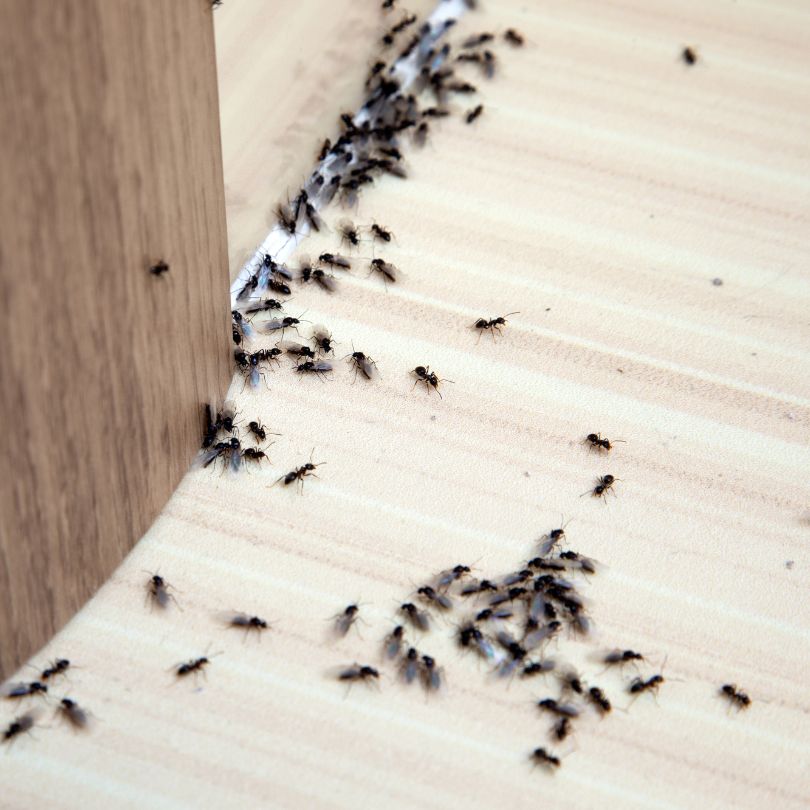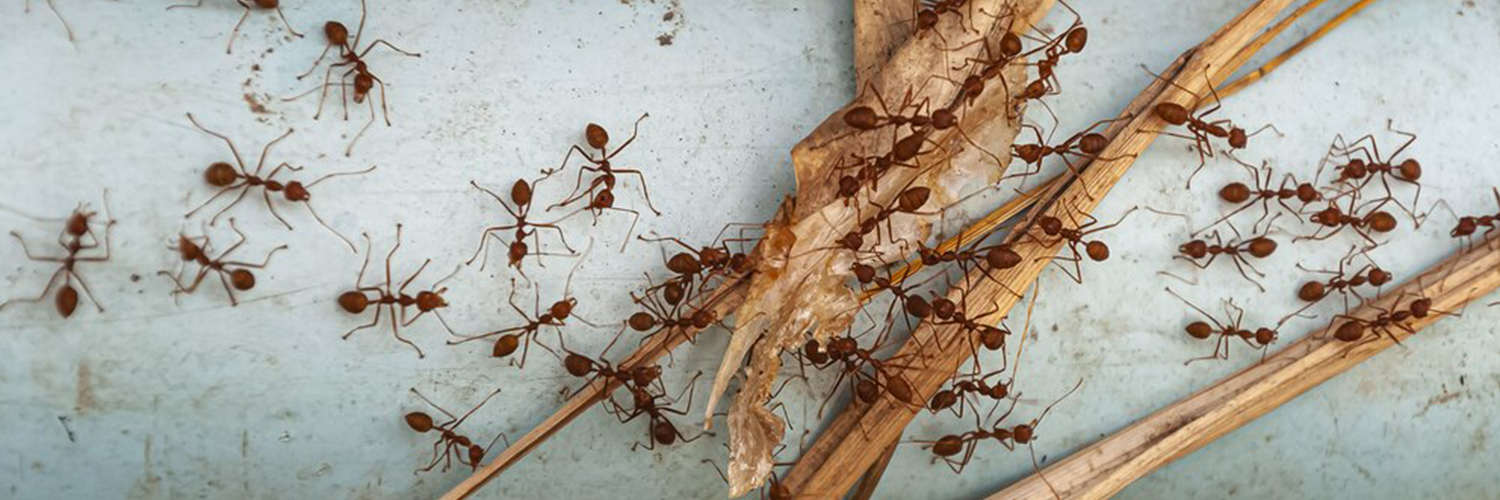Florida’s coastal beauty, mild winters, and abundant sunshine draw residents and visitors to places like Navarre. Yet these same conditions also attract some of the state’s most prolific pests: ants. Though ants play an ecological role in outdoor environments, they quickly become unwelcome guests once they venture indoors. In a warm, subtropical climate, ants can remain active for much of the year, discovering new food sources and establishing colonies at a rapid pace. Below is a comprehensive look at why ants thrive in Florida, the ant species most frequently found in Navarre, and the key steps involved in effective ant extermination and prevention.
Why Ants Flourish in Florida
- Extended Warmth and Mild Winters
Many parts of the country face harsh, freezing winters that halt or drastically reduce insect activity. Florida’s comparatively gentle winters allow ants to continue foraging and reproducing year-round. Even when temperatures dip slightly, they seldom stay low for long. This uninterrupted cycle means ant colonies can grow larger and recover more quickly if partially disrupted. - High Humidity Levels
Florida’s high humidity, punctuated by regular rainfall, creates abundant moisture. Ants can find the water they need in soil, on vegetation, or even from small household leaks. Rain can also flood outdoor nests, prompting colonies to move indoors. Whenever the soil becomes waterlogged, ants relocate to escape saturated ground, using small gaps in door frames or windowsills to enter homes and buildings. - Plentiful Food Sources
Outdoors, Florida’s lush vegetation and varied insect life give ants ample feeding options. Indoors, human activities offer even more enticement. Kitchen counters, unsealed pantry items, and trash bins can all become an instant buffet for ants. If a single scout ant discovers these spots, it leaves a pheromone trail to guide others in the colony. Before long, an entire line of foragers may start appearing, often out of nowhere. - Minimal Dormancy
In colder climates, ants typically undergo dormancy during extended frigid periods, slowing reproduction and seeking insulated shelter. Because Florida experiences only short chilly spells, dormancy times are brief or nonexistent. This prolonged window for colony growth enables ants to rebound swiftly, making consistent pest control a year-round necessity. - Ongoing Development in Coastal Areas
Regions such as Navarre have expanded in recent years, with new constructions and landscaping. When natural habitats are disturbed, ants adapt by seeking harborage near or inside human structures. Landscaping choices can inadvertently benefit ants if ornamental plants are placed too close to walls, providing a convenient bridge for ants to reach interior spaces.

Common Ant Species in Florida
Although Florida is home to many ant species, several are especially prone to infiltrating buildings in Navarre:
- Carpenter Ants
Carpenter ants rank among the largest ants in the state. Often black or red and black, they nest in damp or decaying wood by carving out galleries. While they do not consume wood (unlike termites), their tunneling weakens structural beams, window frames, or other wooden elements. Over time, repeated carving can lead to noticeable damage. Spotting larger ants near rotting wood or noticing fine wood shavings (“frass”) can suggest carpenter ant activity. - Fire Ants
Fire ants are distinguished by their reddish-brown color and aggressive response to disturbances. They construct earthen mounds in yards, gardens, and lawns. When these mounds are disturbed, fire ants swarm out in large numbers, delivering stings that produce painful, itchy bumps. Heavy rain may drive them indoors, though they are more commonly known for creating issues outdoors. Areas where people or pets play can become hazardous if fire ants establish nests there. - Ghost Ants
Tiny, fast, and almost transparent, ghost ants can be difficult to spot. They have a translucent abdomen that blends easily with light backgrounds, making them appear as if part of their body is invisible. They tend to invade kitchens and bathrooms, seeking sweet or greasy food residues. Ghost ants can establish several nesting sites within a single building—behind cabinets, in potted plants, or within wall voids—making them especially challenging to remove completely without thorough treatments. - Argentine Ants
Argentine ants are small and brownish, often forming massive colonies with multiple queens. Their colonies spread quickly, enabling them to outcompete other ant species. When Argentine ants infiltrate a home, they typically move in large, well-defined trails along baseboards, countertops, or foundation lines. Because of their rapid and large-scale nesting, an infestation can develop swiftly if not addressed. - White-Footed Ants
Named for their lighter-colored feet, white-footed ants often live in shrubs, wood piles, or yard debris. However, they will venture indoors if they detect a continuous water source or easily accessible food. Because colonies can number into the tens of thousands, even minor sightings can indicate a much larger presence nearby. Treating both indoor and outdoor areas is frequently necessary for long-term relief. - Pharaoh Ants
Pharaoh ants are small, yellowish ants that thrive in warm, humid conditions. They typically nest in wall voids, behind baseboards, or around appliances. If a colony is partially disrupted, the ants may split or “bud” into multiple, smaller colonies, scattering the infestation rather than resolving it. Addressing pharaoh ants successfully often requires specifically targeted baits, careful product placement, and a consistent follow-up plan.
The Challenges of DIY Ant Control
Property owners sometimes attempt to tackle ants with do-it-yourself products, hoping to resolve the issue quickly. While certain over-the-counter sprays or generic baits may kill ants on sight, they tend to fall short for several reasons:
- Surface Kill Only: Sprays might eliminate the ants currently visible, but colonies often harbor thousands of individuals (including queens) hidden away in walls or under soil. Without targeting the nest, the infestation soon resurfaces.
- Colony Splitting: For species like ghost ants and pharaoh ants, stress on the colony can trigger budding, creating multiple satellite nests. Partial elimination efforts can inadvertently make the problem more widespread.
- Wrong Baits: Each ant species has specific preferences—some prioritize proteins, others sweets, and a few may seek fats. Using a mismatched bait can yield minimal results or be ignored entirely by the ants in question.
- Neglecting Root Causes: Spraying random areas does not fix structural vulnerabilities, food availability, or moisture problems that attract ants in the first place. Until these underlying factors are resolved, ants will likely keep returning.

Why Professional Extermination Is More Effective
A comprehensive ant control plan goes beyond quick fixes, focusing on colony eradication and prevention of future invasions. The main reasons a professional approach often excels include:
- Accurate Identification
A knowledgeable technician inspects the property to determine which ant species are present. Correctly identifying the ants involved is essential for choosing the right bait and targeting strategies. For instance, the type of product that works for fire ants in a yard is different from what’s needed for ghost ants establishing hidden indoor nests. - Colony-Level Treatments
Professionals use specialized techniques that aim to eliminate ants at the source. Rather than simply killing foraging ants, slow-acting baits and properly placed products allow workers to carry the active ingredient back to the queen(s). This disruption of the colony’s reproductive center is crucial for long-lasting relief. - Inspection and Prevention
In addition to direct treatments, professional exterminators recommend structural or environmental adjustments. Sealing cracks, fixing leaks, or trimming shrubbery away from exterior walls can help block ants’ entry points. By addressing water sources and harborage sites, the likelihood of re-infestation diminishes significantly. - Tailored Approaches
Each ant species behaves differently. For instance, ghost ants and pharaoh ants often need carefully selected gel baits placed in discreet, high-traffic zones. Fire ants might be best addressed through mound treatments or broadcast baits designed specifically for them. Professionals adapt their tools and methods to match the ants’ habits, ensuring more effective control. - Safety and Environment
Directed applications of baits and targeted products can minimize exposure to non-target organisms and reduce environmental impact. By focusing on the spots ants frequent—like their entry routes or foraging paths—pest control experts reduce the volume of material used while still significantly impacting the colony. - Follow-Up and Ongoing Support
After initial treatments, some ant species may take time to fully collapse, especially if multiple queens or large satellite nests are involved. Scheduling occasional check-ins or responding quickly if ant activity returns can prevent re-colonization. An integrated approach that combines treatment, prevention, and routine monitoring typically yields the best long-term outcome.
Steps in a Standard Ant Extermination Process
- Comprehensive Inspection
The technician surveys both indoor and outdoor areas, noting ant trails, potential nesting sites, and conditions like standing water or entry points around doors and windows. Identifying the ant species shapes the entire strategy. - Developing a Customized Plan
Once the inspection is complete, the technician chooses from a variety of approaches. For instance, if ghost ants are found primarily in the kitchen, well-placed baits near moisture and sugar sources may be ideal. If large numbers of carpenter ants are discovered near damp wood, direct treatment in those areas—plus the removal of water-damaged material—might be necessary. - Implementing Treatments
This step typically involves deploying slow-acting baits indoors where foragers congregate, applying specialized products along exterior foundations or in yard areas if needed, and treating any known nests. For certain species, creating a defensive perimeter around the structure can keep ants from re-entering. - Addressing Vulnerabilities
Even successful ant extermination can fail over time if structural gaps remain or if the property continues to offer easy access to moisture or food. Technicians often advise sealing cracks in walls or repairing leaks. Ensuring trash containers have secure lids and cleaning up food scraps promptly can also help deter new scout ants. - Monitoring and Follow-Up
In Florida’s climate, ants can reappear if conditions remain favorable. Verifying the progress of colony elimination, placing fresh bait when necessary, or refining tactics if ants shift their entry points helps maintain a pest-free environment. Some property owners opt for scheduled inspections as a preventive measure, especially in areas where ant presence is recurrent.

Serving Navarre
These ant control methods cater directly to the needs of Navarre, an area that blends residential developments, coastal vistas, and pockets of natural habitat. The region’s moderate year-round temperatures and moist conditions encourage ant activity near homes, offices, and commercial properties alike. Whether you live in a new-build home, manage a restaurant, or maintain an office building in Navarre, understanding the local ant species and their tendencies can significantly reduce the stress associated with ongoing infestations.
Making the Most of a Comprehensive Approach
- Local Insight
Professionals familiar with Navarre’s environment know how seasonal rains, summer heat, and coastal humidity affect ant behavior. This deeper grasp helps pinpoint where colonies might nest and how best to intervene. - Colony-Focused Solutions
Instead of surface-level spraying, which might mask the problem temporarily, a colony-focused approach looks at the entire nest. Eliminating the queen(s) and brood at the heart of the infestation prevents ongoing cycles of ant sightings. - Ongoing Education
Many reliable pest control services share tips on maintaining cleanliness, eliminating standing water, and adjusting landscaping to discourage new colonies. Routine upkeep—like fixing small leaks, storing food securely, or pruning vegetation that touches exterior walls—extends the effectiveness of any treatment. - Adaptability
If ants switch their foraging trails or shift their nests, a professional can adapt strategies accordingly. This agility is particularly useful against species known for satellite nesting or budding. Identifying and responding to changes early can spare property owners from a full-scale resurgence. - Year-Round Relevance
In Florida, ants need no special season to multiply; they can remain active during months when bugs elsewhere go dormant. Maintaining vigilance through all seasons ensures that smaller ant problems are caught early, before they balloon into significant headaches.
Conclusion
Ant infestations in a location like Navarre can range from mildly bothersome to severely disruptive, depending on the species involved and how large the colonies become. Florida’s warm, wet climate fosters an ideal environment for ants to thrive, but that does not mean you have to share your living or working space with these persistent intruders. By prioritizing accurate ant identification, employing colony-targeting treatments, and addressing the root causes—such as excess moisture or food availability—property owners can regain a sense of comfort and control.
Whether you have noticed a line of ants weaving around your kitchen sink, a cluster of them near rotting wood in the garage, or earthen mounds forming in the yard, tackling the issue sooner rather than later usually pays dividends in time and peace of mind. A comprehensive approach that combines detection, specialized control measures, structural improvements, and ongoing monitoring sets the stage for an ant-free environment. In a climate as inviting to insects as Florida’s, consistency is key.
Ultimately, a thorough ant extermination plan can bring both immediate relief from foraging ants and lasting protection against future invasions. Rather than relying on repeated short-term fixes, investing in a focused, informed solution helps keep your Navarre property clean, comfortable, and free from the stress and damage these determined pests can cause.
